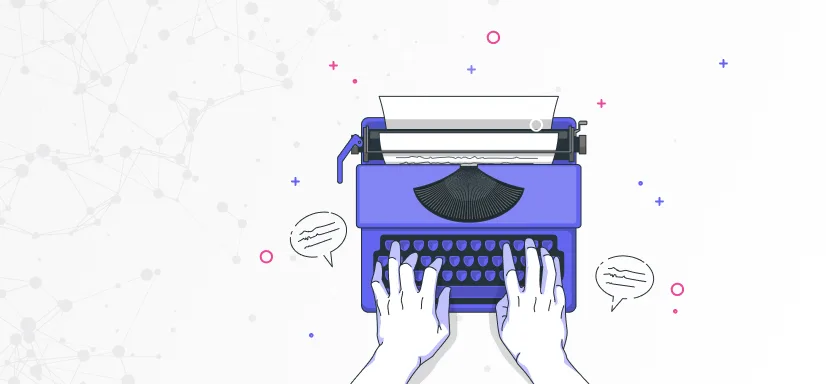- Personalization
4 Ways to Personalize Headlines for Your Readers


We live in a world where written content is more important than ever before. Just because we are reading fewer books doesn't mean we aren't reading at all.
In fact, we're reading all the time.
We're reading when we go to a restaurant and browse the menu. We're reading when we're loading video games on our PlayStation. We're reading even when we are looking at the menu of our favorite website or app.
Don't discount the importance of written content.
Written content is even more important today not only for this reason but also because there's so much of it.
Some might say there's too much content.
Either way, grabbing the attention of a reader from the outset is one of the most important skills in written content. After all, if you're spending your time writing ~1,000 words (like this author!), your words matter less if they aren't reaching intended audiences.
Think about it for a minute. If you're on Google looking for articles related to "how to learn German", would you click on an article that's titled "How You Can Learn German in One Month" or one that's called "Vocabulary & Grammatical Rules of Elementary German"? Probably the former, even if both choices give you the same information.
Whether your goal is to boost your site's search engine optimization (SEO) via blogging or boost user engagement in your app, you need to have headlines that grab the attention of end-users. One way of doing that is by personalizing them to those users.
Here are four ways to personalize headlines for your readers and users.
Way 1: Know the "Why" of the Reader
Understanding the "why" of anything may be a cliche, yet there's a reason why we need to remind ourselves of it so much.
Why will someone consume your content? What's the purpose of writing the content in the first place? What is the reader, and you as the writer, trying to accomplish?
Having a why is tied to everything you and your organization are doing. It's tied to your business model (to solve a problem in the market) and to your coffee drinking habits (to get caffeine and/or enjoy its taste).
If this is the case, then your headline should be personalized towards the "why" of the user.
For example, a headline for a post on a blog may look like the following:
Why You Should Start Investing Before You're In Your Thirties
The headline assumes that the user's goal is to learn the importance of investing early on and perhaps gather some tips on it. The solution proposed? Read this blog post and follow its steps!
Another example is a headline for this blog:
Why Outsourcing Sales Development Generates More Leads
The title assumes that the user wants to learn about the benefits of outsourcing sales development and how it can boost revenue for their business.
These headlines are catchy in their own right. Most importantly, they answer a user's "why".
Way 2: Make Your Headlines Questions or Answers
Another way to personalize headlines is by asking the user questions by inserting the question in the headline.
Why Did the Roman Empire Fall?
Will Machines Ever Be Conscious?
The Best Chocolate Chip Cookie Recipe Ever
These are all examples in which users are looking for content that matches their intention. Sometimes a user's intention is to learn about Roman history or how to make the best cookies in the world.
If you have a base of people who consume your content, chances are they might be looking to answer a question they may have.
While taking the creative leap and writing content for the art of it is always great, your users are always going to have needs to fulfill. By personalizing headlines with questions and answers, you're able to give an additional thing that your users want.
Way 3: Survey Your Current Users
The previous method for creating personalized headlines told you to make headlines with questions or answers. The reason for this is that your users may be looking to solve a problem they have.
But what if you, the service provider/creator, don't know what problems the user has to begin with?
This is when you should survey your users.
Surveying your users is good for personalizing headlines because it enables you to get feedback from your users on a more personal level.
The type of questions you should be asking and the results that come from them will vary, depending on what kind of product or service you're trying to sell or create.
From this start, start asking the relevant questions to the relevant demographics and figure out what kind of content that they're asking for. You can then use that research in future articles or posts.
Knowing all the pain points of customers requires a seamless feedback loop between you and them. And you can use the information received from that feedback loop to answer their most pressing questions via headlines and content.
Assuming can create an...you know how the saying goes.
You shouldn't assume you know everything your customers want, even if they're still using your product or service.
Don't personalize headlines when you're unaware of the user's needs. Do personalize headlines when you are aware of them.
Way 4: Get Ideas From Current User Behavior
This is perhaps the easiest and smartest method for personalizing headlines. It also kills two birds with one stone: it gives you ideas for content and headlines at once.
Let's say you're a blogger who writes about marketing. You wrote an article about brand marketing and why it's important and one of your readers wrote in the comment section asking if SEO can be incorporated into brand marketing.
Then and there you already have an idea for a new article: How SEO Helps Your Business's Brand Marketing.
This article is not only personalized to the question of your user, but it is also helpful to them as they asked the question. Consider that the user in this instance might not be the only one who had such an inquiry as others might have pondered the same thought.
The Bottom Line
It's easier than you think to personalize headlines. Yet headline personalization is crucial if you want people to consume your content.
If you don't personalize your headlines, chances are your content won't be read by the people who need it most.
Learn how to deliver unique and personalized customer experiences to increase conversions

